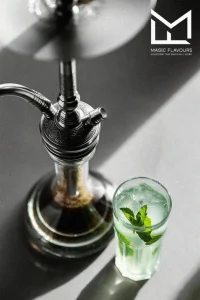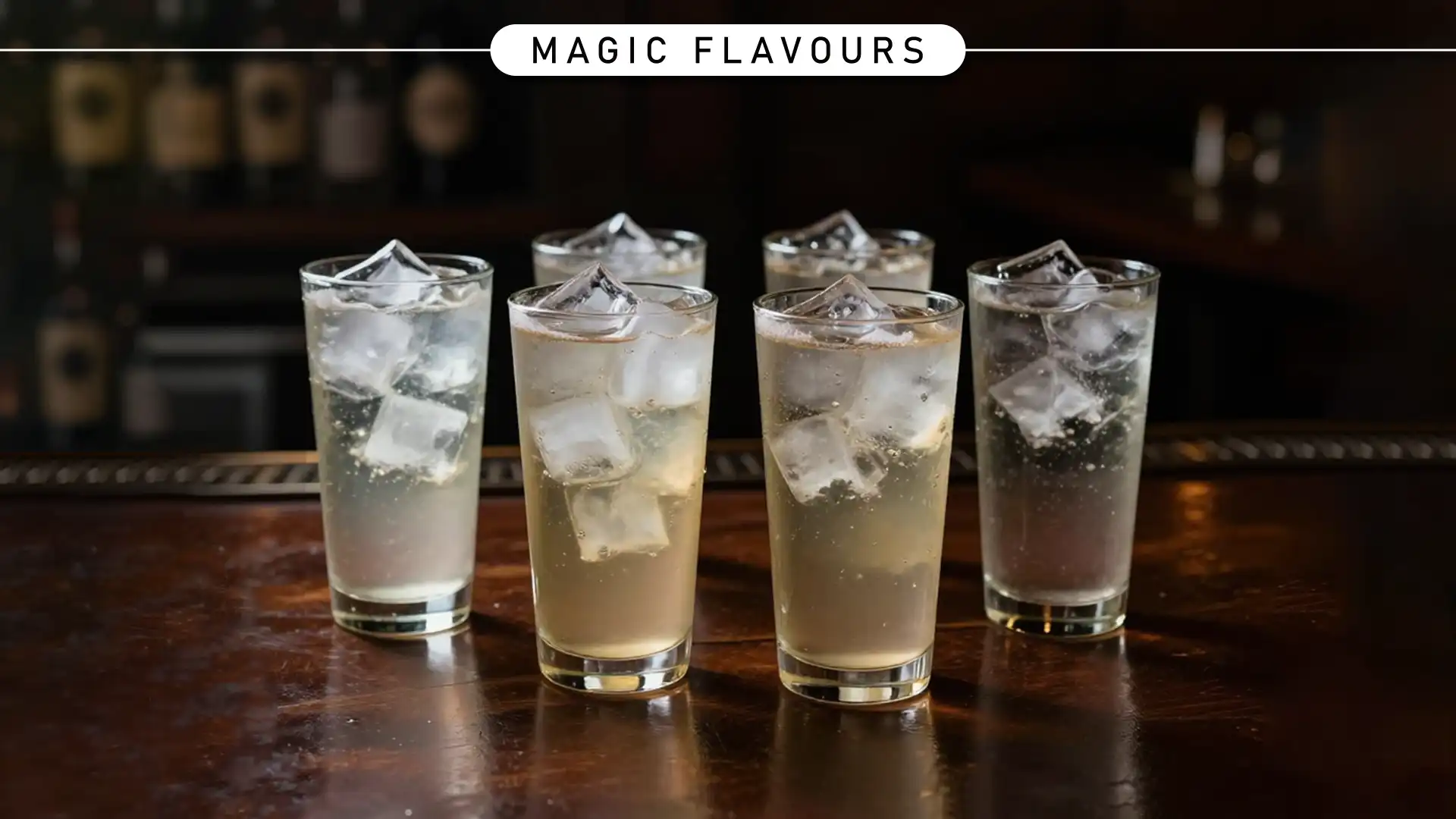1. Introduction
Why Cold Drink Flavors Capture Global Tastebuds

Cold drink flavors are loved worldwide because they deliver refreshment and comfort in every sip. People enjoy them at family tables, and they also share them during lively social gatherings. Each flavor connects to memories, because drinks often remind people of special moments and places. Citrus flavors feel bright and energizing, but berry flavors bring sweetness and nostalgia. Herbal notes add balance, and they also create a calming sense of relaxation. Because flavors influence both emotions and lifestyles, they become cultural symbols that travel across generations. Cold drink flavors remain timeless, and they continue to evolve with global tastes.
The Growing Demand for Refreshing Flavor Experiences
Consumers everywhere demand refreshing flavors because they want both comfort and discovery. They enjoy familiar classics, and they also seek out uncommon innovations that surprise their tastebuds. Because warm climates increase thirst, cold drinks become even more desirable. Trends shift constantly, but the need for refreshment always remains central. Younger generations drive bold flavor exploration, and they inspire brands to experiment with new combinations. Health-conscious consumers also demand natural, light, and balanced options. Therefore, companies must carefully blend tradition with innovation to satisfy today’s dynamic global markets.
2. History & Evolution of Cold Drink Flavors
From Natural Infusions to Complex Flavor Science
Cold drink flavors began with simple infusions, because early cultures used fruits, herbs, and spices for refreshment. People valued natural ingredients, and they enjoyed drinks made with lemon, mint, or honey. Over time, science advanced, and it introduced new methods for extracting and blending flavors. Artificial flavor development expanded choices, but natural profiles continued to inspire consumers. Brands used chemistry to create stability, and they also achieved consistent taste across markets. Because consumers demanded variety, flavor houses worked on innovation and precision. Today, cold drink flavors combine tradition and technology, so they deliver both authenticity and complexity.
Cultural Influences: How Regions Shape Flavor Preferences
Flavors always reflect culture, because people choose tastes that connect with heritage and lifestyle. In the Middle East, floral and minty notes are popular, and they create refreshing balance in warm climates. In Asia, lychee, green tea, and yuzu dominate, because they connect with regional fruits and traditions. Western markets grew around cola, root beer, and lemon-lime, but they now welcome uncommon fusions. Latin America favors tropical and spiced flavors, and Africa embraces bold fruit infusions. Because culture defines taste, brands must adapt flavors for regional identity. Global success grows when tradition and local preferences blend with innovation.
Iconic Flavors That Defined Eras (Cola, Lemon-Lime, etc.)
Every era brought iconic cold drink flavors, and each left a lasting cultural mark. Cola defined the early 20th century, because it became linked with energy, style, and modern living. Lemon-lime followed as a refreshing choice, and it grew into a symbol of lightness and clarity. Root beer became a nostalgic favorite, because it connected to family traditions and community gatherings. Orange sodas added playful sweetness, and they inspired youth-focused marketing. Later, tropical blends gained popularity, because consumers wanted adventurous and uncommon sensations. Each iconic flavor shaped memories, and they also influenced how new drinks were created. Because of this, cold drink flavors tell the story of changing lifestyles and generations.
3. Flavor Categories in Cold Beverages: Exploring Cold Drink Flavors
Citrus Classics: Lemon, Lime, and Orange as Timeless Choices
Citrus flavors remain timeless because they deliver instant freshness and brightness. Lemon provides a sharp, clean taste, and lime adds a zesty twist. Orange balances sweetness and tang, and it also creates feelings of energy and lightness. People love citrus flavors because they feel natural and familiar. Brands continue to use citrus bases, but they also blend them with herbs or tropical fruits. Because these flavors are versatile, they appeal to both traditional and modern consumers. Citrus drinks are refreshing, and they always stay relevant across cultures and generations.
Berry & Fruit Bursts: Strawberry, Raspberry, and Uncommon Fruits
Berry flavors offer sweetness and vibrancy, and they connect strongly with joyful emotions. Strawberry delivers comfort, but raspberry adds a tart, playful touch. Blueberry feels smooth and rich, and it also pairs well with citrus or herbs. Consumers enjoy berry blends because they feel both indulgent and refreshing. Many brands expand options with unique fruits, such as passionfruit or dragon fruit. Because berries balance sweetness and tartness, they create layered taste experiences. Berry flavors are flexible, and they suit both classic and adventurous cold drink recipes.
Herbal & Botanical Refreshment: Mint, Ginger, and Basil

Herbal and botanical flavors bring freshness, and they also add depth to cold drinks. Mint feels cooling and crisp, and it blends perfectly with citrus. Ginger provides warmth, but it also delivers energizing sharpness. Basil offers a gentle herbal note, and it creates balance when paired with fruits. People choose these flavors because they feel natural and soothing. Brands highlight botanicals to answer demand for light and health-inspired drinks. Because herbs pair easily with many bases, they allow endless creative blends. Herbal and botanical flavors refresh the body, and they also refresh the senses.
Creamy & Indulgent Notes: Vanilla, Caramel, and Cream Soda
Creamy flavors appeal because they feel comforting and indulgent. Vanilla provides smoothness, and it blends naturally with fruit or spice. Caramel adds sweetness and warmth, but it also creates depth in cold beverages. Cream soda remains a nostalgic favorite, and it connects strongly with childhood memories. People enjoy these flavors because they feel rich and satisfying. Brands often mix creamy notes with fruity or fizzy profiles, so they create layered experiences. Because indulgent flavors evoke emotions, they build loyalty and nostalgia. Creamy cold drink flavors bring comfort, and they also invite playful creativity.
Special & Experimental: Tamarind, Lychee, and Hibiscus
Some flavors stand out because they feel distinctive and adventurous. Tamarind offers tangy depth, and it creates bold contrast in sweet drinks. Lychee brings floral sweetness, but it also feels light and refreshing. Hibiscus delivers a tart, colorful profile, and it connects strongly with natural wellness trends. People try these flavors because they want unusual experiences. Brands introduce rare fruits and florals, and they also mix them with familiar favorites. Because these flavors surprise consumers, they create excitement and curiosity. Special and experimental cold drink flavors inspire exploration, and they also shape the future of beverage trends.
4. Sensory Science Behind Cold Drink Flavors
Why Coldness Changes Flavor Perception
Temperature affects how we taste drinks, because cold slows down our sensitivity to sweetness. Cold beverages feel more refreshing, and they also highlight crisp and tangy notes. People often perceive flavors differently when chilled, so citrus or herbal drinks seem sharper. Creamy or sweet flavors feel smoother, and they also feel lighter in cold form. Brands consider this effect carefully, because the right temperature enhances flavor enjoyment. Coldness balances intensity, and it also ensures that drinks stay pleasant over time. Therefore, understanding how cold changes perception helps flavor developers create memorable experiences.
Sweetness vs. Acidity: Striking the Perfect Balance
Balancing sweetness and acidity are essential, because it defines the overall taste experience. Sweetness creates comfort, and it also masks strong bitterness. Acidity adds brightness, but it also enhances refreshment and crispness. Drinks that are too sweet feel heavy, and they can overwhelm subtle flavors. Drinks that are too acidic feel sharp, but they may lack roundness. Brands experiment with combinations, and they also adjust ratios for different markets. Because consumers seek harmony, balancing sweetness and acidity ensures both satisfaction and excitement. The perfect balance makes cold drinks enjoyable, and it keeps consumers coming back.
The Role of Aroma in Refreshment
Aroma shapes flavor perception, because the nose detects hundreds of scent molecules before tasting. Fruity, herbal, or floral aromas enhance flavor, and they also create anticipation. Cold temperatures can mute aroma, but brands counter this by intensifying fragrance compounds. People enjoy aromatic drinks because they feel more complex, and they also feel more refreshing. Aroma guides the brain, so it affects how sweetness, acidity, and bitterness are perceived. Flavor developers focus on scent and taste together, because both create complete sensory experiences. A pleasant aroma elevates refreshment, and it also strengthens brand recognition.
5. Regional & Cultural Preferences in Cold Drink Flavors

Middle East: Rose, Mint, and Tropical Infusions
The Middle East embraces flavors that reflect tradition and climate. Rose water adds floral sweetness, and it also connects to heritage. Mint remains essential, because it feels cooling and balances rich foods. Tropical fruits such as mango and pineapple bring vibrancy, and they also suit warm weather. People enjoy these flavors because they feel refreshing and familiar. Brands often combine floral and fruit notes, so they create blends that appeal across generations. Because tradition guides taste, Middle Eastern consumers value both authenticity and freshness. These flavors remain timeless, and they also inspire global beverage innovation.
Asia: Lychee, Green Tea, and Yuzu Trends
Asia offers distinctive flavor trends because culture and local fruits shape choices. Lychee provides floral sweetness, and it also feels light and delicate. Green tea adds earthy depth, but it also represents wellness and balance. Yuzu brings citrus sharpness, and it creates refreshing brightness in many drinks. Consumers in Asia appreciate subtle blends, and they also value natural, health-focused options. Because tradition influences preference, teas and fruits stay central to beverage innovation. Brands adapt global flavors, but they highlight local specialties for authenticity. Asian cold drink flavors feel distinctive, and they also inspire global markets to explore new directions.
Europe & US: Cola, Root Beer, and Craft Flavor Revivals
In Europe and the US, cold drink flavors often reflect nostalgia and modern experimentation. Cola remains iconic, because it symbolizes energy and timeless refreshment. Root beer offers herbal richness, and it also connects to traditional family gatherings. Lemon-lime continues to thrive, but new craft revivals bring unusual fusions. Consumers enjoy artisanal sodas, and they also seek local, natural, and premium choices. Because markets are diverse, brands balance tradition with small-batch creativity. Retro flavors return often, and they also pair with modern twists for wider appeal. Europe and the US celebrate history, but they continue to embrace craft-driven reinvention.
Africa & Latin America: Uncommon Fruits and Spiced Refreshers
Africa and Latin America celebrate flavors inspired by unique fruits and spices. In Africa, hibiscus, baobab, and tamarind drinks bring tangy depth, and they also highlight local heritage. In Latin America, tropical fruits like guava and passionfruit feel bright, and spices like cinnamon add warmth. People love these flavors because they connect to nature and tradition. Brands use local ingredients, but they also introduce blends for international curiosity. Because climates are warm, refreshing and bold tastes dominate choices. These regions showcase diversity, and they also influence global beverage creativity. Rare fruits and spices keep flavors distinctive, and they inspire worldwide interest.
6. Innovation in Cold Drink Flavor Development
Health-Driven Trends: Low-Sugar and Natural Ingredients
Consumers increasingly demand healthier drinks because they prioritize wellness and natural ingredients. Brands respond by reducing sugar, and they also highlight fruit and plant-based flavors. Natural sweeteners provide balance, and they also maintain refreshing taste. People enjoy drinks that feel lighter, but they still want satisfying flavor. Because health concerns influence choice, beverages now combine taste with better nutritional profiles. Herbal infusions and citrus blends enhance refreshment, and they also feel clean and authentic. Companies innovate continuously, so they meet consumer expectations without compromising flavor. Health-driven innovation ensures drinks remain enjoyable, and it also builds long-term trust with customers.
Functional Beverages: Flavor Meets Energy, Focus, and Wellness
Functional drinks combine taste with benefits because people seek energy, focus, or relaxation. Ingredients like ginseng, green tea, and adaptogens enhance wellness, and they also integrate smoothly with fruit flavors. Consumers try these beverages for both purpose and enjoyment, but they also value natural profiles. Brands carefully balance functional elements, and they also ensure drinks remain pleasant and refreshing. Because functional trends are growing globally, companies experiment with flavor, aroma, and appearance. Functional beverages feel modern, and they also inspire creativity in flavor development. Drinks that deliver both taste and benefits encourage repeat consumption, and they also reinforce brand relevance.
Novel Pairings: Mixing Fruits with Botanicals for Premium Blends
Creative pairings excite consumers because they offer distinctive and refreshing experiences. Fruits like mango, pineapple, or raspberry combine with botanicals such as mint, basil, or hibiscus. These blends feel natural and sophisticated, and they also enhance sensory complexity. Consumers enjoy layered flavors, but they also seek novelty without overwhelming taste. Brands explore rare combinations, and they also adapt classic flavors for premium appeal. Because consumers are curious, innovative pairings encourage trial and loyalty. Novel fruit-botanical blends feel special, and they also set trends for future cold drink development. Creativity in flavor mixing drives both delight and brand differentiation.
7. Applications Beyond Beverages: Expanding Cold Drink Flavors
Cold Drink Flavors in Confectionery & Desserts
Cold drink flavors inspire sweets because they bring familiar and refreshing tastes to desserts. Citrus, berry, and creamy notes work well in candies, ice creams, and baked treats. People enjoy these flavors because they feel nostalgic, and they also provide playful sensory experiences. Brands adapt beverage profiles, but they also create new textures and combinations for confectionery. Because desserts engage multiple senses, flavor balance is crucial. Sweet treats enhanced with cold drink flavors feel exciting, and they also evoke memories of favorite drinks. Innovative desserts expand possibilities, and they also introduce beverages to new audiences.
Cross-Industry Inspiration: From Hookah to Mixology

Cold drink flavors influence other industries because their profiles inspire creativity and experimentation. In mixology, bartenders blend fruit, herbal, and creamy notes, and they also explore unusual combinations. Hookah and beverage sectors borrow flavor techniques, but they also adapt intensity and aroma for unique experiences. Consumers enjoy recognizable tastes, and they also seek novelty across platforms. Because flavors cross boundaries, innovation is shared globally, and it inspires fresh ideas. Cold drink flavor principles enhance cocktails, desserts, and lifestyle products, and they also create opportunities for brand storytelling and signature creations.
8. Future of Cold Drink Flavors
AI & Data-Driven Flavor Forecasting
Artificial intelligence helps predict consumer taste preferences because it analyzes trends and data patterns. Brands use AI to identify popular ingredients, and they also forecast emerging flavor combinations. Data-driven insights guide product development, but creativity remains essential for unique offerings. Companies can test concepts faster, and they also reduce trial-and-error costs. Because AI supports precision, flavors are more aligned with consumer desires. Future drinks will be both innovative and appealing, and they will respond quickly to changing global tastes. AI enhances decision-making, and it also inspires new directions in flavor creation.
Sustainability and Ethical Sourcing of Flavor Ingredients
Consumers demand sustainable practices because they value environmental responsibility and ethical sourcing. Brands now choose natural ingredients carefully, and they also minimize waste and carbon footprint. Ethical sourcing ensures fair trade and supports local communities, and it also builds trust. Because sustainability influences purchase decisions, companies prioritize transparency in flavor development. Eco-friendly practices enhance brand reputation, and they also encourage long-term industry growth. Cold drink flavors now reflect both quality and responsibility, and they also inspire conscious consumer choices.
Personalized Refreshment: Custom-Made Flavor Experiences
Personalized drinks grow in popularity because consumers seek tailored taste experiences. Brands offer customizable flavors, and they also allow adjustments in sweetness, acidity, and aroma. Personalized options create engagement, and they also strengthen brand loyalty. Because tastes vary across individuals, customization ensures satisfaction and repeat consumption. Technology supports these experiences, but creativity shapes memorable combinations. Personalized refreshment feels special, and it also transforms beverages into interactive lifestyle choices. Future drinks will balance individuality and flavor science, and they will inspire consumers to explore new taste journeys.
9. Conclusion: Insights on Cold Drink Flavors
Cold Drink Flavors as a Reflection of Culture and Innovation
Cold drink flavors reflect both culture and innovation because they connect traditions with modern trends. They carry memories, and they also inspire creativity. Regional preferences shape taste, but global markets encourage experimentation and adaptation. Consumers enjoy familiar flavors, and they also embrace new combinations that surprise the palate. Brands balance heritage and novelty, because both elements strengthen connection and satisfaction. Flavor development continues to evolve, and it also mirrors societal changes and lifestyle shifts. Cold drink flavors are timeless, and they remain a bridge between culture, science, and enjoyment.

Refreshing the Future: What’s Next for Cold Drink Flavors and Global Palates
The future of cold drink flavors promises creativity and personalization, because consumers seek new experiences. Technology supports innovation, and it also helps predict trends more accurately. Sustainability and ethical sourcing guide ingredient choices, but taste and quality remain central. Personalized beverages offer tailored refreshment, and they also strengthen engagement and loyalty. Consumers will explore unique blends, and they will continue to celebrate both tradition and experimentation. Cold drink flavors will evolve, and they will shape global palates with endless possibilities and refreshing experiences.
